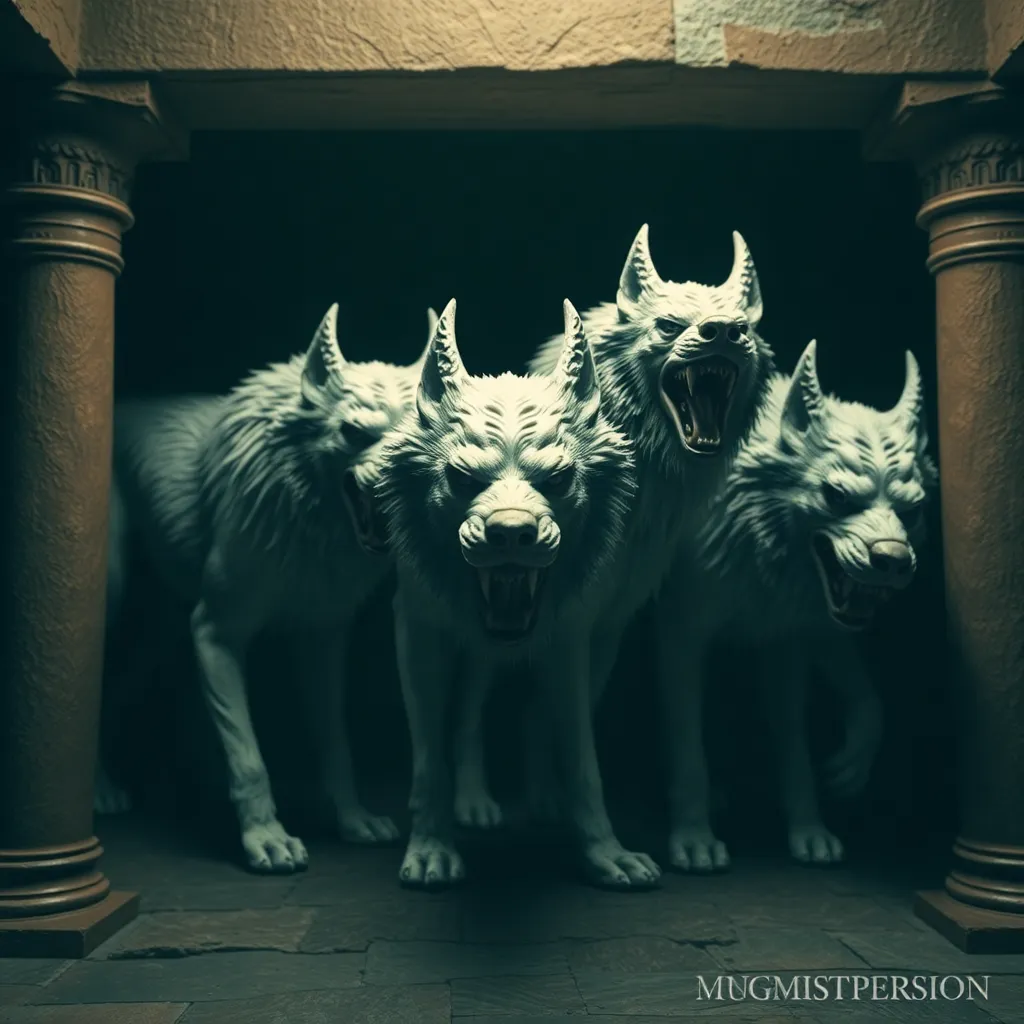Exploring the Underworld: The Role of Cerberus in Ancient Mythological Beliefs
I. Introduction
In the rich tapestry of Greek mythology, few figures are as iconic and evocative as Cerberus, the three-headed dog that guarded the gates of the Underworld. Cerberus serves not only as a fearsome creature but also as a crucial symbol within ancient beliefs surrounding death and the afterlife. The Underworld, known as Hades, was a place of significant importance in ancient Greek culture, shaping their understanding of mortality and the fate of souls after death. This article aims to explore the multifaceted role of Cerberus, examining its origins, significance, and the lessons derived from its mythological narratives.
II. The Origins of Cerberus
Cerberus is traditionally described as the offspring of the monstrous Echidna and the fearsome Typhon, making him a creature of both power and terror. His lineage places him among other notable mythological beasts, emphasizing his role as a guardian of the Underworld.
The symbolism of Cerberus is rich and varied in ancient texts. He is often depicted with a serpent for a tail and additional heads, symbolizing his vigilance and ferocity. In various accounts, his presence at the entrance of the Underworld serves to emphasize the transition from life to death, marking the boundary that souls must cross.
Connections to other mythological creatures can be seen, such as his resemblance to the Chimera and other hybrid beasts, reinforcing the theme of chaos and the monstrous within the realm of death.
III. Cerberus as the Guardian of the Underworld
Cerberus holds a pivotal role in Hades, acting as the ultimate guardian of the souls that enter the Underworld. His primary function is to prevent the living from entering the realm of the dead and to ensure that the dead do not escape back to the world of the living.
- Role and significance: Cerberus embodies the finality of death and the sanctity of the Underworld, serving as a reminder of mortality.
- Functions: He protects the dead from becoming restless spirits, maintaining order in the afterlife.
- Interactions: Cerberus encounters various mythological heroes and souls, often testing their resolve or intentions.
IV. Cerberus in Mythological Narratives
Several key myths feature Cerberus, showcasing his importance in Greek mythology.
1. Heracles and the Capture of Cerberus
One of the most famous tales involving Cerberus is the twelfth labor of Heracles, where he is tasked with capturing the beast. This myth illustrates themes of bravery, strength, and the confrontation with death. Heracles’ successful capture signifies his mastery over fear and chaos.
2. Orpheus and the Descent into the Underworld
In another poignant story, Orpheus descends into the Underworld to retrieve his beloved Eurydice. Cerberus plays a critical role in this narrative as he is lulled to sleep by Orpheus’ enchanting music, allowing the hero to pass unharmed. This tale emphasizes the power of art and love in overcoming even the most formidable challenges.
Both of these stories convey important lessons about human existence, the nature of death, and the courage required to face the unknown.
V. Symbolic Interpretations of Cerberus
Cerberus serves as a potent symbol within the framework of ancient beliefs.
- Fear and protection: He represents the fear of death and the unknown while simultaneously protecting the realm of the dead.
- Duality: Cerberus embodies both guardian and monster, illustrating the complex nature of existence and the afterlife.
- Life and death: His presence highlights the transition between life and death, serving as a reminder of mortality.
VI. Cerberus in Art and Literature
The representation of Cerberus in ancient Greek art is notable, often depicted in sculptures and pottery as a fearsome creature. These artistic interpretations served to reinforce the cultural significance of Cerberus as a guardian of the Underworld.
In later literature and popular culture, Cerberus has been reimagined in various forms, from Dante’s “Inferno” to modern fantasy adaptations. His character continues to influence modern interpretations of mythology, showcasing the enduring legacy of this mythological guardian.
VII. Comparative Analysis with Other Mythological Guardians
When examining Cerberus, it is essential to consider other mythological guardians across cultures.
- Similarities: Like Anubis in Egyptian mythology and Yama in Hindu beliefs, Cerberus serves as a protector of the afterlife.
- Differences: While Cerberus is often portrayed as a fierce monster, Anubis is typically depicted as a benevolent guide for souls.
- Cultural significance: Each guardian reflects the unique beliefs and values of their respective civilizations, emphasizing different aspects of death and the afterlife.
VIII. Conclusion
In conclusion, Cerberus plays a significant role in ancient mythology as the guardian of the Underworld. His multifaceted character embodies themes of fear, protection, and the complex nature of death. The lasting impact of Cerberus on modern culture and beliefs highlights the importance of mythological figures in understanding human fears and beliefs about the afterlife. As societies continue to grapple with the concept of mortality, the stories of guardians like Cerberus remain relevant, offering insights into the human experience and our perceptions of life and death.



